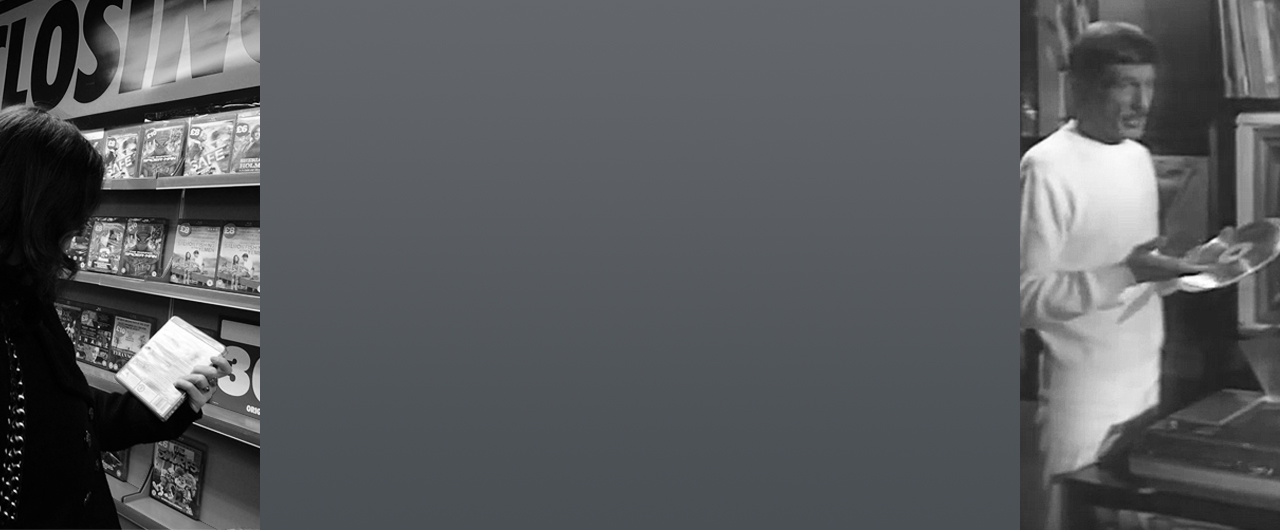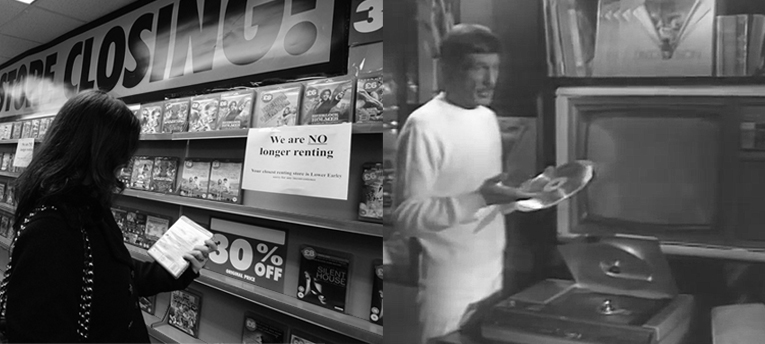





Any medium read by physical contact with a mechanism—a phonograph needle, an electrical contact, a mechanical actuator—is degraded slightly with each access. Additionally, because the read mechanism is mechanical, there are practical limits to how small it can be made, which limits the density of information storage. The diode laser, invented in 1962, offered the possibility of using light to read the medium, thus eliminating direct wear during access. Laser light can be focused on an extremely small spot (∼1.0 µm for a CD), which means information can be stored at a much higher density. The information is stored as pits or indentations of varying length stamped into the disc and is read by reflecting laser light off the disc as it spins. Light is reflected differently at the transition between the flat surface of a pit and the surface between pits (known as lands). Both analog and digital information can be stored, depending on how the distance between transitions is interpreted.


LaserDiscs were introduced in 1978, soon after the Betamax (1975) and VHS (1976) videotape formats. Although still an analog format (unlike later CDs and DVDs), it offered far higher quality than videotape. But, although discs were produced through 2002, LaserDiscs never achieved the widespread popularity of VHS. The player was expensive and watching an entire movie required flipping the disc midway through or loading multiple discs in sequence. And, unlike videotape, they weren't generally recordable.
LaserDiscs store video as pits and lands (the surface between pits) in a reflective metal layer, just like CDs and DVDs. Unlike these later digital formats, however, LaserDiscs store video in analog form. This seems counterintuitive; the difference between a pit and a land seems binary. But the length of a pit or land is a continuous variable. The video signal is frequency modulated and the length of a pit or land represents the frequency of the FM signal at that point. (It's a little more complicated than that, but that's the general idea.)


Inventors often take successful media as a model for new media. The analogy is not always helpful: one of Edison's earliest attempts at moving pictures involved hundreds of tiny images wrapped around a cylinder. But the inspiration sometimes bore fruit: Charles Babbage and Herman Hollerith were aware of and based their use of punch cards at least partly on Jacquard's automated looms. Record discs, because of their pervasive consumer adoption, were a particularly compelling model. In the 1970s, RCA found a way to store analog video on a grooved disc similar to a record. Video requires far more information than audio, so a central challenge was vastly increasing the density of grooves.


The Compact Disc (CD) was introduced in 1982 by Philips and Sony. CDs store digital data as pits on a reflective metal layer sandwiched between polycarbonate and acrylic. Analog audio is sampled and converted to binary data, which is encoded and written to the disc as a series of pits or depressions separated by "lands". (Note that writable CD media like CD-R and CD-RW use chemical and phase changes, respectively, to store information and are dealt with in those sections.)


Although LaserDiscs offered high quality analog video, the format was expensive and watching an entire movie typically required flipping the disc, or even inserting a second or third disc. Compact Discs had demonstrated the quality and convenience of a digital format for audio, but storing two hours of digital video was a much greater challenge. In 1995, companies had gathered around two competing solutions. With memories of the BetaMAX/VHS format war still fresh, all stakeholders agreed on a common format.


Digital television officially replaced analog TV in the United States in 2009. Digital TV did not imply high resolution, but the lower bandwidth requirements of digital vs. analog TV made high definition TV (HDTV) broadcasting practical. Around the same time, the emergence of flat screen technologies made it economically possible to display high resolution, wide screen video. DVDs, however, supported the standard vertical resolution of 525 lines (625 lines outside the United States) with an aspect ratio of 4:3. The desire and opportunity for high definition, widescreen video recording was apparent to consumer electronics companies like Sony and Toshiba, as well as movie studios and computer companies like Microsoft.
The invention of the blue diode laser by Shuji Nakamura in 1995 made higher density optical storage possible (once the patent dispute between Nakamura and Nichia, the company he had worked for, was resolved). Consumer electronics companies, movie studios and computer companies backed two competing standards for high-definition video discs: HD-DVD and Blu-ray. A format war reminiscent of VHS vs. BetaMAX followed, with Blu-ray emerging as the winner in 2008.


The Canon optical memory card uses the same basic mechanism to store information as a compact disc, except that the pits are laser-etched into the recording layer instead of stamped. This is a form of write-once storage that allows custom information like name and medical information to be stored for a particular user.